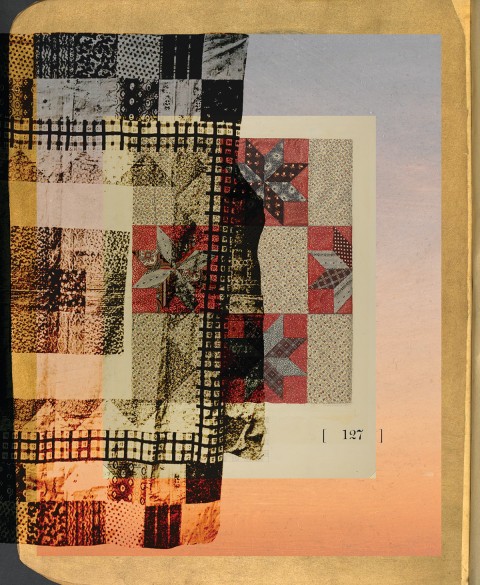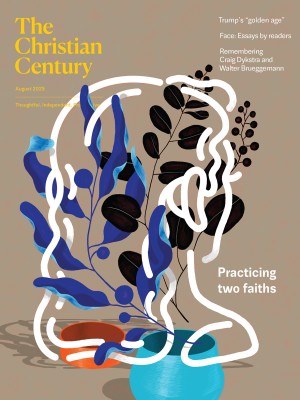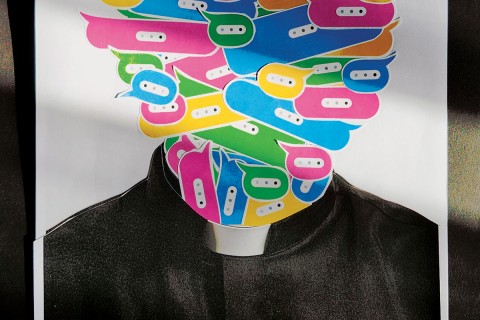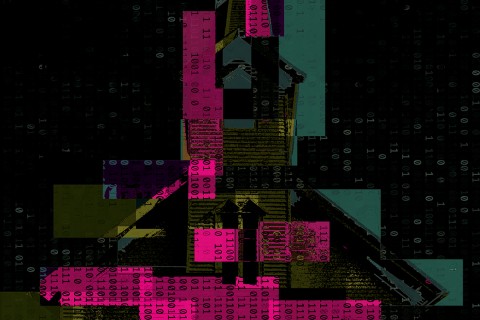The shelter of fabric
I gravitate toward Jesus’ instructions to provide food. I tend to gloss over the verses about clothing.

Century illustration (Source images: Creative Commons)
Recently I watched the Netflix documentary The Quilters. The short film tells the story of men incarcerated in a maximum-security prison in Missouri who learn the craft of quilting. They make quilts for children in the foster care system. Their quilts are practical and beautiful, with attention to detail and with what seems like love mixed with repentance and hope sewn into the stitches.
I had been thinking about fabric, its shelter and its comfort, since attending a conference last fall. The theme was “unraveling” obsolete denominational processes and structures. The metaphor was both overplayed and not always entirely clear, but my imagination was captured by a keynote lecture that included some historical information about fabric. I knew so little about fabric, entirely taking it for granted. Now I notice it everywhere.
Read our latest issue or browse back issues.
My experience with fabric began with frustrating and sometimes disastrous 4-H sewing projects. I’m left-handed, so the sewing machine and all sewing processes were the opposite of anything intuitive for me. My mother was a utilitarian seamstress who did not sew or work with fabric for fun. We were inevitably at odds when she was trying to help me finish a project for the county fair at the height of summer. I would have much rather been outdoors with friends than indoors at the sewing machine, and she would have much rather not been in the presence of her huffy and hurried teenage daughter. I ripped out plenty of seams and started many projects over. Some my mother simply finished herself.
One place I’ve been noticing fabric is in the Bible: the swaddling clothes of the manger, the hem of Jesus’ garment that the woman touches, the curtain of the temple torn in two, the abandoned grave clothes in the empty tomb. There’s Elijah’s mantle, in which he shelters when he hears the still, small voice of God. There’s Lydia, the purveyor of precious purple cloth. My favorite figure associated with fabric is Dorcas, who sews garments in her home for the poor and the widows before she falls ill and dies and Peter raises her to life (Acts 9:36–43).
I take Matthew 25:31–46 seriously as a set of criteria for faithful discipleship. I know I’m capable of providing a tasty meal for the women’s shelter in our town or a comforting casserole for the church potluck. I gravitate toward discipleship through the provision of food. But I completely gloss over Jesus’ words about giving clothing.
I confess that I used to think of the church sewing circles I knew from my childhood as primarily social events. Now I realize that those ladies were our church’s Dorcas and her friends, making the baby blankets and the clothing for those in immediate need. Just as the quilting circle in the Missouri prison now makes blankets for those children in need.
I realize that I would struggle to clothe myself if some anonymous person, likely paid very little, were not making clothes for me. I wonder if we’re now approaching the time when we are going to find out who is capable of mending and sewing and weaving—and who must pay high tariffs for the fast fabrics, made with exploitative labor, that we’ve come to love without regard for the welfare of workers or the environment.
I have the greatest admiration for those who can clothe others and shelter them in blankets and quilts of their own making. I think particularly of my husband’s maternal grandmother, aunt, and great-aunt, all now of blessed memory. I did not have the privilege of knowing them, but I know them through their quilting. Quilts they created which first graced my husband’s bed and his brother’s bed now grace our sons’ beds. These quilts, made with available fabrics or scraps from other projects, are worn and well loved. They are far more durable than any Instagram-worthy coordinating comforter sets we could pick up from an online retailer.
Every time we go to my in-laws we come home with more quilts. There is a quilt made from scraps of my husband’s 1990s-era blue jeans, complete with the Levi’s silver tab label. There are the two large, heavy quilts made of corduroy backed by a cool, smooth cotton, perfect for our bed in winter or for snuggling under with a book or while watching football. Beyond quilts there are the needlework Bible verses, the small rag rugs that we scatter here and there, and two matching pieces that hang in each of our sons’ rooms, complete with their full name, the date and time of their birth, and a profile of a sailor boy and sailboat.
I think again of Dorcas, sewing the garments for the poor and the widows. In those first early days narrated in the Acts of the Apostles, did she know the words of Jesus that we know from Matthew 25? Did she hear the scripture echoing in her head, “You gave me clothing,” as she stitched those garments and thereby sheltered her community? Did my husband’s Grandma Verna, Aunt Joan, and Great-Aunt Garnita think of Dorcas as they stitched? I know that they were women shaped by scripture and Christian upbringing in a German Lutheran church out on the Iowa prairie. Even if they were not recalling Dorcas, I have no doubt that they knew they were sewing mercy and kindness, shelter and comfort. When I shelter under one of those quilts, I feel covered by the ancestors, and I hope they know how their work continues to shelter and cover the next generations.







